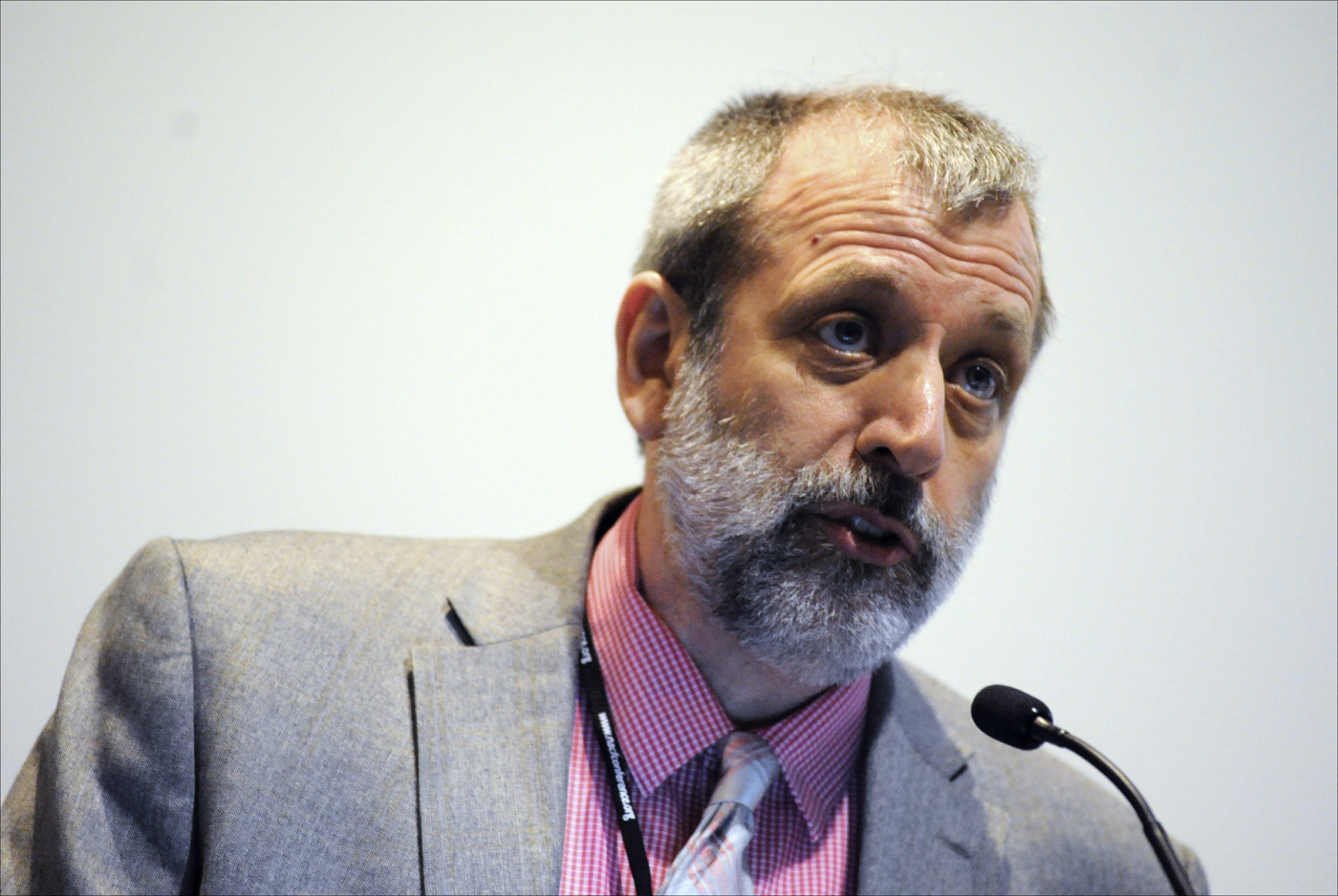CF Patients Navigate Increasingly Complex Health Insurance Quagmire

Scott Grosse, PhD, a health economist at CDC, talks about rising drug prices at NACFC.
Florida resident Megan Willis has cystic fibrosis (CF), and she’s not getting better. But that didn’t stop authorities last March from deciding otherwise, and denying her access to Medicaid — which for years had been paying her more than $100,000 in annual healthcare expenses.
“My health has only gotten worse in the past year,” Willis, 22, told CBS News recently. Because Social Security had mistakenly ruled that the young woman’s health had improved since the last review of her case, the agency terminated her benefits and she lost Medicaid. And because she lives in Florida — one of 14 states without expanded Medicaid — she had no other way to get it.
“We’ve seen a five-times increase in the number of people with cystic fibrosis that have been reviewed in the past 18 months,” Beth Sufian told CBS. Sufian is a Houston attorney who runs the Cystic Fibrosis Legal Hotline, and was able to get Willis back on disability insurance in November. “We think that Social Security is targeting young people with chronic illness in an effort to reduce the number of people getting benefits,” Sufian said.
Willis’s predicament underscores a paradox that’s increasingly evident when it comes to the reality of treating people with CF.
The Cystic Fibrosis News Today forums are a place to connect with other patients, share tips and talk about the latest research. Join today!
On one hand, CF patients are living longer than ever. In a recent interview, Preston Campbell, MD, president and CEO of the Cystic Fibrosis Foundation (CFF), put the median life expectancy for a CF baby born today at 44 years, up from only 10 years in 1962.
Yet spending on healthcare for CF has exploded in recent years — with expenditures on medications alone jumping from an average $24,959 per patient in 2009 to $44,529 in 2015.
The reasons for this are varied, ranging from increased barriers to insurance and coverage for CF patients to greater scrutiny of patient assistance programs in general.
Survey seeks answers for CF patients
Marsha Regenstein, PhD, is a professor of health policy at George Washington University. She recently carried out a study — financed by the CFF — to evaluate the financial burden faced by CF patients, and analyze gaps and inadequacies in healthcare coverage.
“Most people with CF have problems paying for healthcare, yet no type of insurance adequately protects such people from the costs of care,” said Regenstein, who spoke at last November’s 32nd Annual North American Cystic Fibrosis Conference (NACFC) in Denver.
Her 48-question CF Health Insurance Survey, conducted between January and April 2018, was a self-administered questionnaire that took 15 minutes to complete. The CFF recruited respondents through social media and CF care centers, and offered $10 eGift cards as an incentive.
Of the 2,539 respondents, 54.5% were females and 32.6% were under 18. Regenstein and her team also conducted qualitative follow-up interviews with 45 respondents.
Just over a third (33.9%) of respondents had not been hospitalized in the 12 months prior to the survey, while 21.7% had one hospital visit, and 21.2% had three or more; comparative figures for the general U.S. population are 93, 5.3, and 0.1%.
Nearly eight out of 10 people with CF receive financial assistance of one form or another, with 20.7% of them paying less than $1,000 in out-of-pocket expenses annually. Yet health insurance premiums range from $1,500 to $7,500 or more, depending on specific plans.
Among people with CF, 55.9% have private health insurance, while 18% have private health insurance plus Medicaid. Another 14% are insured only by Medicaid, and the remaining 12.1% only by Medicare; all are on Medicare by virtue of their disability.
More than a third of respondents say they cannot afford their insulin — a troubling statistic given that so many patients develop cystic fibrosis-related diabetes.
“Huge numbers of people have problems paying for healthcare, even 28.8% of people with annual incomes of $150,000 or more,” Regenstein said. “And people who have problems paying for routine care are six times more likely to skip their medications.”
CF drugs and cost-effectiveness
Scott Grosse, PhD, is a health economist at the Atlanta-based Centers for Disease Control and Prevention (CDC). Grosse also spoke at NACFC, on the topic “Cost as a Potential Barrier to Accessing Treatments for Rare Diseases.”
He said that prescription medicines accounted for only 9% of the $2.9 trillion Americans spent on healthcare in 2013, far behind hospital care (32%) and doctor visits (20%). Yet a recent spike in drug prices has dominated headlines, causing problems for CF patients with limited incomes.
“Affordability refers to budget impact. If you have an ultra-rare condition, the cost per person may be high, but because it affects a small number of people, the impact may not be high. So the number of people treated may be more important to the payer than the cost-effectiveness ratio,” Grosse said.
“If two drugs have the same price, but one has no alternative treatment for that indication, it’ll be much more likely to be considered medically necessary than the one for which there’s an alternative,” he said.
Under Medicaid, Grosse pointed out, more costly drugs are less likely to be covered, because a higher bar of evidence may be required.
“High out-of-pocket costs can lower medication adherence,” he said. “When families have to spend a large percentage of their income on medication, they’re likely to reduce their adherence and not [fill] their prescriptions.”
For example, the average per-patient price of Vertex Pharmaceuticals’ CF therapy Kalydeco (ivacaftor) for 34 privately insured U.S. patients during 2014-16 was $306,719, while the median out-of-pocket payment was $617.50 — though the amounts individuals actually paid ranged anywhere from $45 to over $12,000.
“Payers are less likely to effectively cover very high-priced drugs, even if cost-effectiveness is not an official criteria for coverage decisions,” Grosse said. “In the U.S., cost-effectiveness is not an official criterion. For Medicare — which covers the elderly — medical necessity is the stated criteria. If the treatment for a condition is life-extending, it will be approved regardless of cost.”










